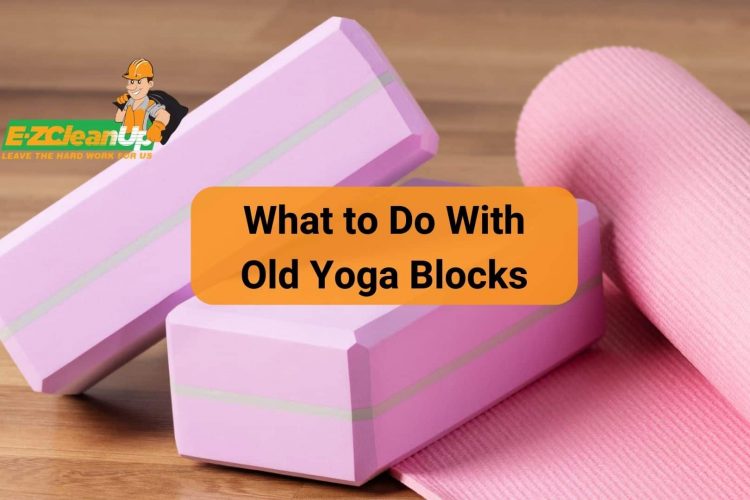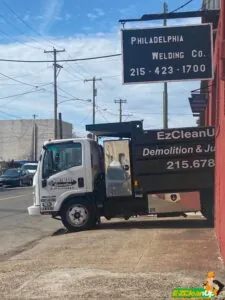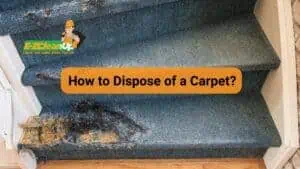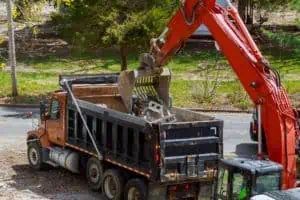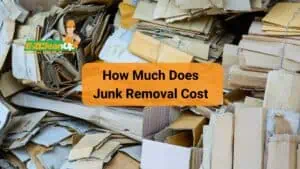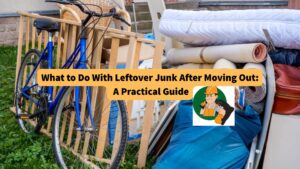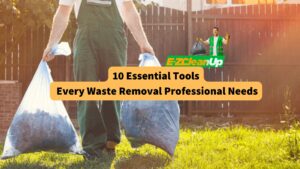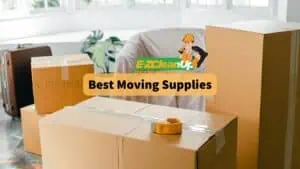Old yoga blocks can be recycled, composted, or repurposed. Recycle EVA foam blocks at specialized facilities after cleaning and removing non-EVA materials. Compost biodegradable blocks. Repurpose them for DIY projects and more.
Continue reading for detailed methods and creative ideas about what to do with old yoga blocks in the article below.
Eco-friendly Disposal Options
When it comes to disposing of old yoga blocks, you’ve got several options that are safe and environment-friendly.
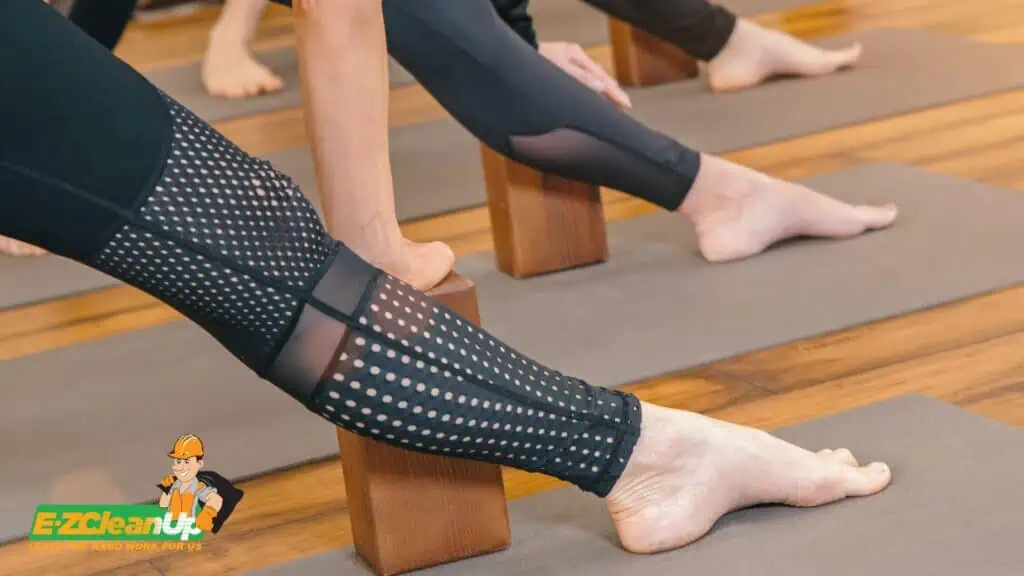
How to Recycle Yoga Blocks
Recycling yoga blocks involves a few key steps and considerations to ensure you’re contributing effectively to sustainability.
First, it’s crucial to identify recycling facilities that can process EVA foam, the material most yoga blocks are made of, as not all centers have the capability to recycle this material.
Once you’ve found the right facility, prepare your yoga blocks for recycling. This preparation involves thoroughly cleaning the blocks and removing any non-EVA materials, such as labels or adhesives. Depending on the facility’s requirements, you may either need to drop off the blocks or arrange for their collection.
Alternative Ways to Recycle Yoga Blocks
There are also alternative ways to recycle yoga blocks. Some manufacturers of yoga blocks run take-back programs specifically for recycling their products. Additionally, you can participate in community recycling events or drives.
Another aspect of this process is supporting the market for recycled products by purchasing yoga blocks made from recycled EVA foam. When buying these blocks, it’s advisable to look for products with environmental certifications or labels, as these indicate a commitment to sustainable practices.
Composting Biodegradable Yoga Blocks
Composting biodegradable yoga blocks made from natural materials like bamboo, cork, or natural rubber is an excellent way to responsibly dispose of them while benefiting the environment.
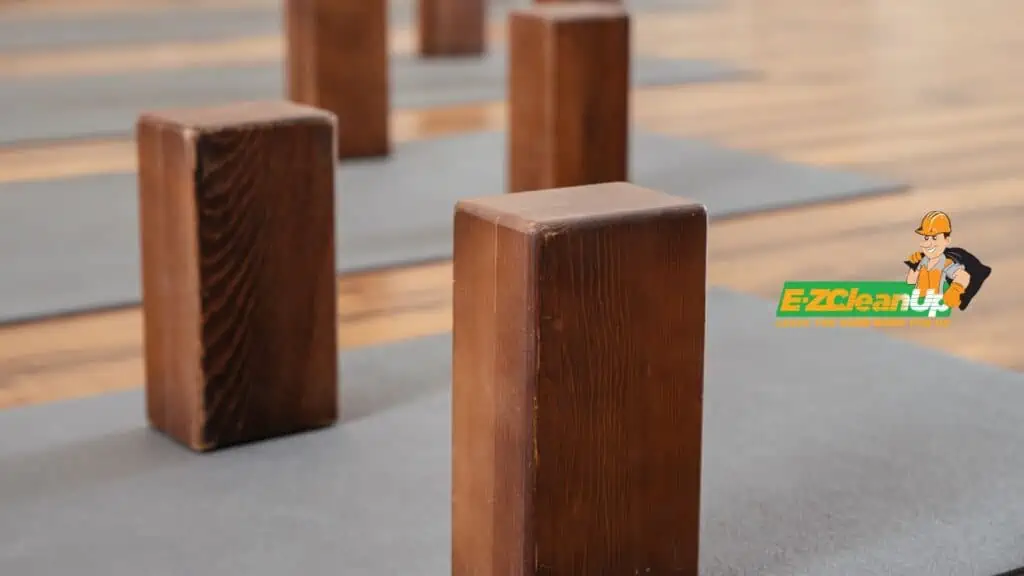
Here’s how to do it:
- Identify the Material of Your Yoga Block: Ensure the block is made from natural materials. Bamboo is known for its sturdiness and quick decomposition. Cork is lightweight and breaks down over time. And natural rubber is durable but biodegradable.
- Prepare the Yoga Block for Composting: Cut or break into smaller pieces. This increases the surface area, which will speed up the decomposition process. For bamboo and cork, use a saw or sharp knife. For rubber, scissors or a knife might work, but it can be tough to cut.
- Choose the Right Composting Method: If you have a compost bin or pile at home, home composting is a convenient option. If you have none, some communities offer composting facilities that can handle larger or tougher items.
- Layering: Begin the composting process by placing the yoga block pieces in your compost bin/pile. Layer them with other organic materials like kitchen scraps, leaves, or grass clippings.
- Moisture: Ensure the compost has enough moisture. The materials should be damp but not soaked.
- Aeration: Turn your compost regularly to provide oxygen, which is crucial for the composting process.
- Time Frame: Decomposition time varies based on the material. Bamboo can take six months to a year to fully decompose. Cork usually decomposes within a few months to a year. Natural rubber might take longer, potentially a year or more.
- Compost Ready: You’ll know the compost is ready when it looks like dark, crumbly soil and you can’t identify the original materials.
- Use the Compost: Once ready, use the compost in your garden or for potted plants to enrich the soil.
Tips:
- Patience is Key: Natural materials take time to break down, especially in a compost setting.
- Balance Your Compost: For optimal composting, balance green materials (kitchen scraps, grass clippings) with brown materials (leaves, small twigs).
- Check Local Guidelines: Some areas have specific rules about composting materials.
- Not All Blocks Are the Same: Ensure your yoga blocks are indeed biodegradable and not coated with any non-biodegradable materials.
- Avoid Chemicals: Don’t compost yoga blocks that have been treated with chemicals, as they can contaminate the compost.
Repurposing Old Yoga Blocks
Old yoga blocks don’t need to end their journey in a landfill. With a bit of creativity, they can be given a new life in your home.
DIY Home Projects
Here are some ideas of how you can repurpose yoga blocks as DIY projects you can use at home:
- Homemade Yoga Props: Transform your old yoga blocks into DIY yoga equipment. For example, create a yoga bolster by cutting a block into a cube shape and covering it with fabric. This can provide support in various yoga poses. You can also craft a homemade yoga strap using fabric and a buckle to aid in stretching and posture support.
- Shelf Enhancements: Use old yoga blocks to create unique shelf designs. They can serve as stands for small shelves or be incorporated into larger shelf units for a distinctive look.
- Furniture Accents: Add a touch of uniqueness to your furniture by using yoga blocks as decorative elements, such as bookends or tabletop accents. They can be painted and modified to match your home decor.
- Door Repurposing: Get creative with old doors and yoga blocks by combining them to create a coffee table or a coat hanger.
- Outdoor Furniture: Whether it’s a small patio table or a set of quirky garden stools, your old yoga blocks can find a useful place in your outdoor space.
- Home Storage Solutions: Yoga blocks can be repurposed into storage solutions. Cut them to fit as drawer organizers or use them to create dividers in larger storage units.
Creative Arts and Crafts
Old yoga blocks can be more than just workout equipment; they can be the foundation of your next creative project.
Here’s a list of ideas for repurposing them into arts and crafts:
- Sculptures: Carve or shape yoga blocks into artistic sculptures that can add a unique touch to your home decor.
- Painting Canvases: Use the flat surfaces of yoga blocks as miniature canvases for painting. This is a great way to practice your art on a small, manageable scale.
- DIY Stamps: Carve patterns into the blocks and use them as stamps for fabric or paper printing. This is a fun way to create custom designs.
- Children’s Building Blocks: Transform them into building blocks for children. Simply ensure the edges are smooth and the size is safe for play.
- Garden Markers: Write or paint the names of plants on them and use them as garden markers. They’re durable and can withstand outdoor conditions.
Functional Uses in Daily Life
Repurposing old yoga blocks for daily life is not only eco-friendly but also practical. Here are some innovative ways to use them:
- Desk Organizers: Convert yoga blocks into desk organizers. Carve slots for pens, clips, and other small office supplies.
- Door Stoppers: Their weight and size make yoga blocks excellent door stoppers. Decorate them to match your room’s theme.
- Pin Cushions: For sewing enthusiasts, transform yoga blocks into large pin cushions. Cover them with fabric for a neat finish.
- Jewelry Holders: Carve small grooves into the blocks to hold rings, earrings, and necklaces. This is a unique way to display and organize jewelry.
- Laptop or Book Stand: Prop up your laptop or book for a comfortable reading or working angle.
- Plant Stand: Elevate your potted plants for better aesthetics and drainage.
- Footrest: Under your desk, they can serve as a comfortable footrest.
- Exercise Aid: Outside of yoga, they can be used for various exercises, like support in squats.
- Camera Stand: Steady your camera for photography or videography.
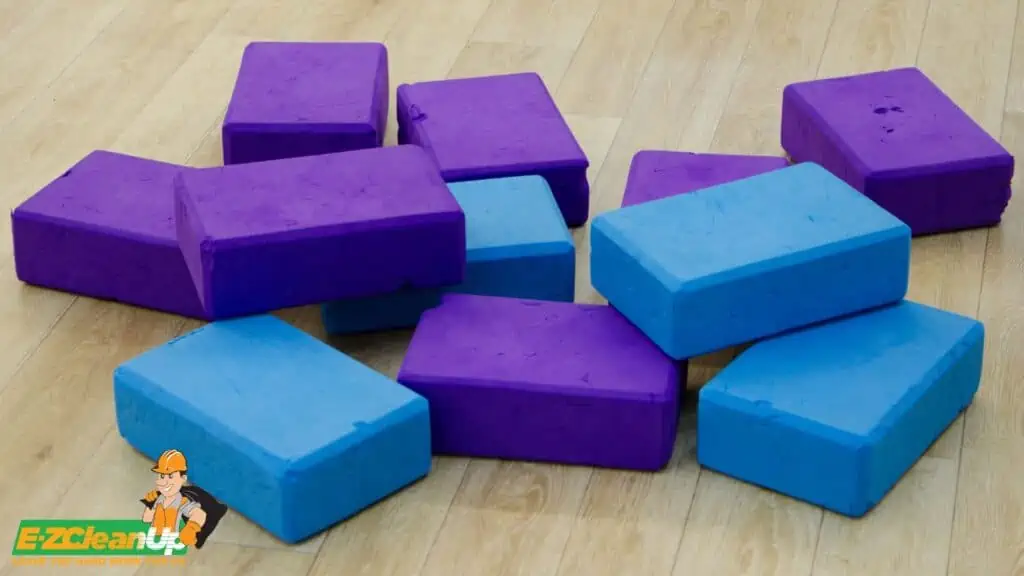
Donation and Community Sharing
When your yoga blocks have served their purpose in your personal practice, they can still offer significant value to others.
Here’s how you can extend their life through donating and community sharing:
Donating to Local Yoga Communities
Yoga blocks can be a valuable resource for local yoga communities, especially those that offer free or donation-based classes. These classes often rely on donated equipment to support their participants.
You can contact local yoga studios, community centers, or non-profit organizations that offer yoga classes to inquire about their need for such equipment. Often, these entities welcome gently used yoga accessories to help make yoga more accessible to a broader audience.
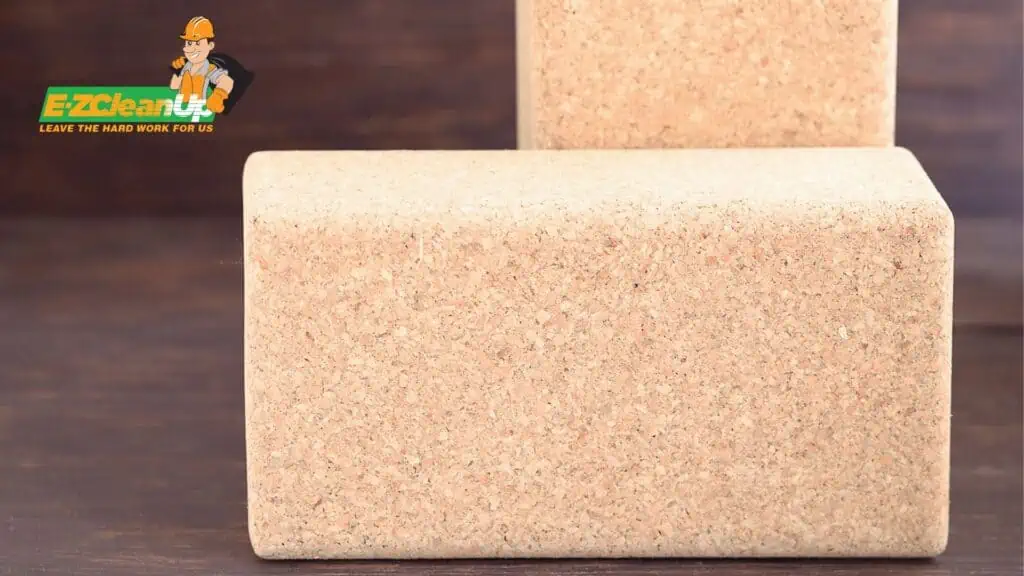
Offering to Schools and Recreational Centers
Schools and recreational centers are also great places to donate used yoga blocks. Many schools have started incorporating yoga and mindfulness practices into their physical education curriculum but may lack the necessary resources.
Similarly, recreational centers that offer yoga classes might benefit from additional equipment. By donating your yoga blocks, you’re not only repurposing them but also supporting the physical and mental well-being of children and community members.
Online Platforms for Giving Away
In the digital age, there are various online platforms where you can list your used yoga blocks for donation. Websites like Craigslist or local Facebook community groups are excellent places to start.
Sustainable Alternatives for Future Purchases
When it comes to replacing your old yoga blocks, making eco-friendly choices can significantly impact both your practice and the planet.
Here’s a guide to help you make sustainable decisions for your future purchases:
Choosing Eco-Friendly Yoga Blocks
Opt for yoga blocks made from sustainable materials like cork or bamboo. Aside from being environmentally friendly, these materials also offer the durability and support needed for yoga practice.
For instance, cork yoga blocks are known for their firm yet soft texture and good grip. They are also biodegradable, and they often come without plastic packaging. Bamboo blocks are another great option, as bamboo is one of the fastest-growing natural materials and offers a solid, durable, yet lighter alternative compared to wooden blocks.
Evaluating the Lifespan and Recyclability
Consider the lifespan and recyclability of the yoga blocks you choose. Long-lasting materials like cork and bamboo can endure numerous practices. Recycled foam blocks are another option. They are typically made from eco-friendly EVA foam and recycled polyethylene, which offer lightweight yet firm support. These materials are also recyclable.
Supporting Sustainable Brands
Supporting brands that are committed to sustainability is crucial. Look for companies that use eco-friendly materials and practice responsible manufacturing. Brands like Yoloha specialize in sustainable yoga mats made from natural cork and recycled rubber.
Other brands, such as Mache, focus on creating sustainable yoga and fitness storage solutions. They use responsible manufacturing practices and craft their products locally in small batches. Additionally, brands like Wolven blend sustainability with unique ethnic-inspired designs in their yoga apparel, using recycled plastic bottles, which reduces waste and preserves the environment.
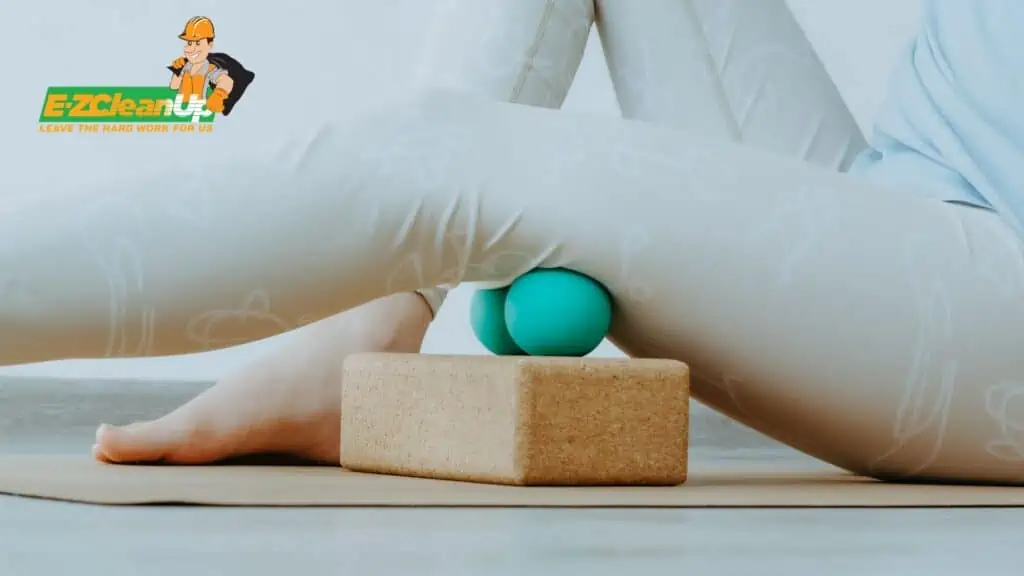
Health and Safety Considerations
Yoga blocks should be replaced when they show signs of wear and tear that could compromise your safety and the effectiveness of your practice. Key indicators include visible cracks, deep indentations, or a general loss of structural integrity.
Foam blocks, being less durable than cork or wood, may need replacement more frequently, especially if they start to crumble or lose their shape. A reliable rule is to inspect your blocks regularly, especially if you practice frequently or intensely, and replace them when they no longer provide the necessary support or stability.
Health Risks of Degraded Materials
Old and degraded yoga blocks, particularly those made of foam, can pose health risks. As foam blocks wear out, they can release small particles that may be harmful if inhaled. Additionally, worn-out blocks might harbor bacteria and fungi, especially if they’ve absorbed sweat over time and haven’t been cleaned properly.
Ensuring Safety in Repurposing
When repurposing old yoga blocks, it’s crucial to consider their condition to ensure safety. For example, using a damaged block for a DIY project might not be safe if it cannot hold the required weight or structure.
If you’re planning to repurpose blocks in a way that still involves physical support (like seat raisers or footrests), ensure they are still sturdy enough to safely bear weight without collapsing.
For non-supportive repurposing, like using them as plant stands or in arts and crafts, the structural integrity is less of a concern, but it’s still wise to avoid using blocks that are crumbling or releasing particles.
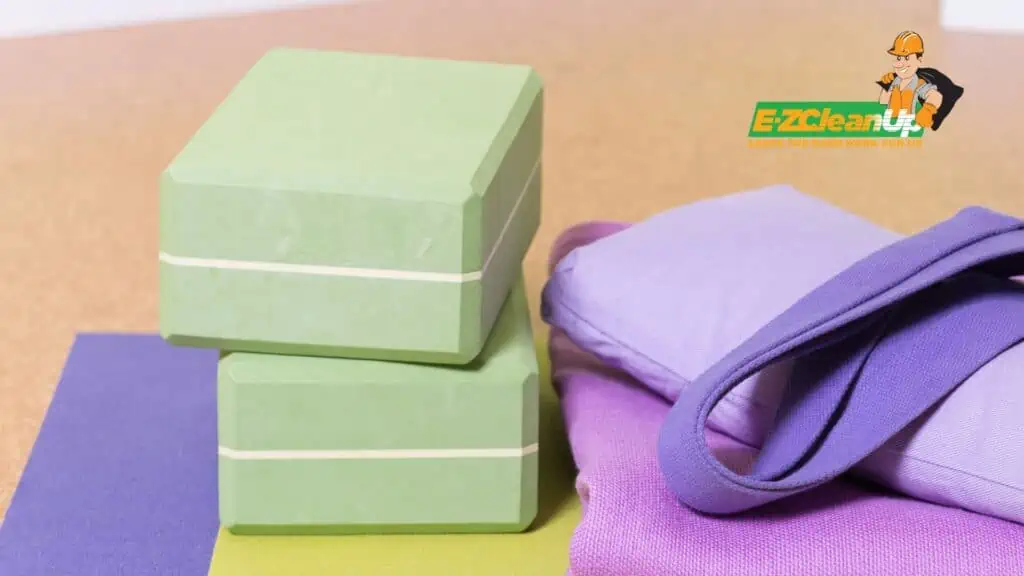
Make a Difference with Your Old Yoga Blocks
Turn your old yoga blocks into something good for our planet. Recycling, composting, or finding new uses for them helps the environment. Every small step matters in making a positive change.
And if you’re cleaning up big and need some help, reach out to us at EZ CleanUp. We’re here to make things easier for you, so you can keep making a difference.

